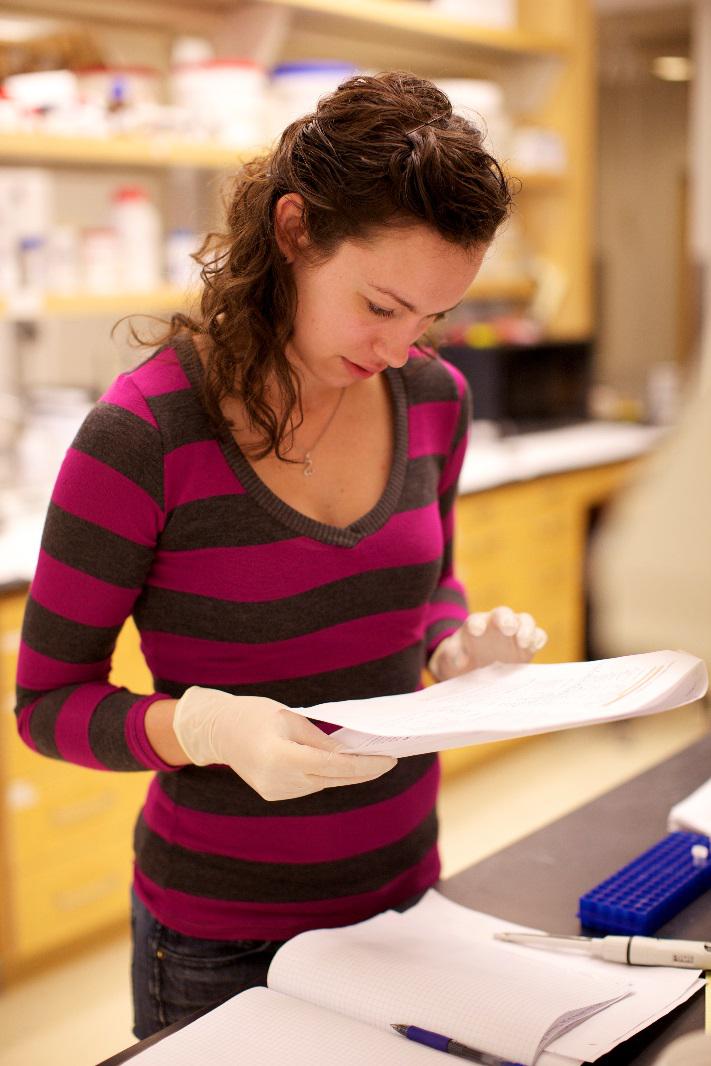10 Incredibly Useful Protocol Resources for Life Scientists
by Rebecca Talley

by Rebecca Talley
When doing research, using existing protocols and modifying them to suit your experiment can save you a lot of time if you know where to search. Here are 10 great protocol databases to check out.

When doing life science research, the best way to save time and increase your efficiency is to use and modify existing protocols. It is rare that you will ever need to come up with your own protocol from scratch and preexisting protocols can save you time. Finding protocols when you don’t know where to look can be time consuming and monotonous. To save you the effort of searching the internet high and low trying to find a procedure to follow, I have compiled 10 sources for protocols here and a brief description of each that goes over cost. Many of the protocols can be found at little to no cost so take advantage of them and you can spend more time doing the science that you love rather than hunting for reliable protocols for your experiment.
When searching for protocols, one of the first places to look is on your supplier’s website. At GoldBio, we offer a variety of protocol types ranging from how to use our products, to preparing stock solutions and a guide for using our buffers. Check out our growing database of protocols and to see if your other suppliers offer protocols on their sites as well.
|
|
||
Protocol Online is a large database of life science protocols provided by suppliers, researchers and labs around the world. It was created by POL Scientific, which publishes a variety of journals, including the Journal of Biological Methods. Protocols are divided into categories and subcategories making them easy to find. There is also a search feature to help you locate a protocol you need even faster.
|
|
Nature has two different databases of protocols available online. Nature Protocols is a collection of vigorously peer-reviewed protocols that have been approved for publishing. These protocols are not free to access; however, there are a variety of sponsored protocols available at no cost.
Nature also has a database known as the Nature Protocol Exchange. At this site, users can upload any type of scientific protocol, but there is a focus on protocols related to life science research. This is an open source database so there are no fees for accessing protocols that have been uploaded by other users. There is no peer-review process that protocols go through before being published on the protocol exchange.
|
|
||
Springer offers a variety of protocols divided into categories. These protocols require a subscription to access and can therefore become quite expensive. Protocols have been reviewed by the site’s editor of that particular subject area. Additionally, there are about 150 free protocols available in their free protocol library. Springer’s protocols are written in a step-by-step manner similar to a recipe from your favorite cookbook.
|
|
||
JoVE is a peer-reviewed journal that publishes visual experiments such as videos or images. The idea behind JoVE is that using visualized science, the reproducibility of protocols will be increased. Moreover, it will decrease the amount of time scientists spend learning new techniques because they will be able to follow along with the protocol visually. Many of the video protocols published on JoVE require a subscriptions, but there are also some available as open-access experiments.
JoVE publishes a wide variety protocol videos. Some of the methodologies featured in their journal are newly discovered or updated, while others are standard, common techniques. JoVE publishes works related to both the life and physical sciences and they are organized by subjects such as biology, immunology, engineering, etc.
|
|
||
Hivebench is an electronic lab notebook with a feature available for users to upload protocols to an open-access protocol database. Anyone can post protocols for public viewing and the protocols are not peer reviewed before becoming accessible to users. Protocols can be copied and pasted, and then edited directly in the Hivebench notebook. If you don’t use Hivebench for your lab notebook, don’t worry—the protocols are freely accessible even without opening a Hivebench account.
|
|
||
OpenWetWare is a wiki page set up in 2005 by graduate students at MIT. It was created to share discoveries and information in biology among members of the scientific community. The page features various sections including protocols, labs, and courses. You can add your lab to OpenWetWare by submitting a request to join. More importantly, protocols are free to access without creating an account. They’re organized by categories, but the site also has an option to search through their protocols so it is easy to find what you’re looking for.
|
|
||
Bio-protocol is a site created by a group of biologists from Stanford. They saw an area where life science research was lacking—the reproducibility of experiments. The protocols are published and accessed at no cost, but must be related to the life sciences. They are detailed and peer-reviewed to ensure accuracy and reproducibility. Furthermore, there is a moderated question and answer forum associated with each protocol so if there are any areas of confusion, they can be addressed in a collaborative manner. You can access protocols by field of research or organism.
|
|
||
Protocols.io is an open-source database of protocols for the life sciences. Similarly to Bio-protocol, researchers and suppliers can upload details protocols outlining improvements to existing procedures or just sharing a completely new experimental process. Researches can comment and leave questions on protocols. What sets Protocols.io apart from other protocol databases is that users can clone and edit protocols when they find out something new and want to update what the previous author had written. There is also an application where you can access Protocols.io from your mobile device and follow the experiments step-by-step, marking each instruction complete as you go.
|
|
||
SciGine is a scientific methods search engine designed to search the web and its database of updated protocols for scientific methods. After finding a protocol, you can edit it to match exactly how you performed your experiment. You can then save your new edited copy and share with colleagues at your own discretion. SciGine also features a blog that provides techniques and tips for some of the most common biologic procedures such as the Western Blot.
All of these online tools can help you find protocols quickly. If there is a protocol that you cannot find, you can also turn to books such as “Current Protocols in Molecular Biology.” Sometimes you will find a protocol that is for something similar to the experiment that you want to perform, but will have to tweak and alter it to find your needs. When compiling, writing and editing your own protocols, read our article Protocol Writing in the Life Sciences.
In the interest of sharing, feel free to submit your protocols to GoldBio if you feel they might help others in the field.
 Rebecca Talley GoldBio Staff Writer |
Rebecca is a medical student at the University of Missouri. She previously worked as a lab technician while studying biology at Truman State University. As an aspiring reproductive endocrinologist with an interest in global health, Rebecca has traveled across Central America on medical mission trips. With a passion for the life sciences, she enjoys writing for GoldBio. |
Category Code: 79107, 79108, 79109

The GoldBio Floating Tube Rack is one of our more clever giveaways because of the unique purpose it serves. And, with it also being one...

The characteristic blue color of nickel agarose beads comes from the 2+ oxidation state of the nickel ions. Color is also a useful indicator for...

GelRed™ and GelGreen™ are both DNA gel stains designed as safer alternatives to ethidium bromide, with no detectable mutagenicity at concentrations used for DNA gel...

Nickel agarose beads are compatible with a wide range of buffers. However, it is important to limit the amount of metal chelating agents, such as...
